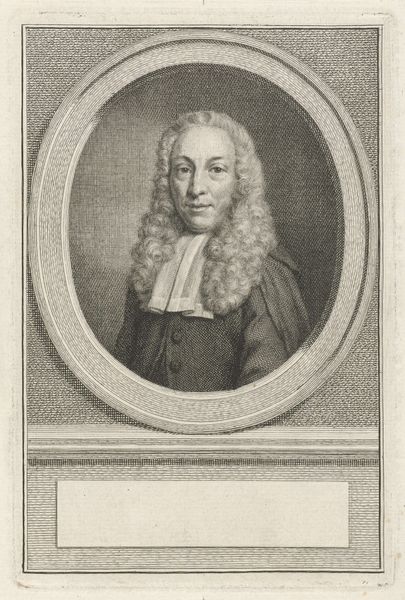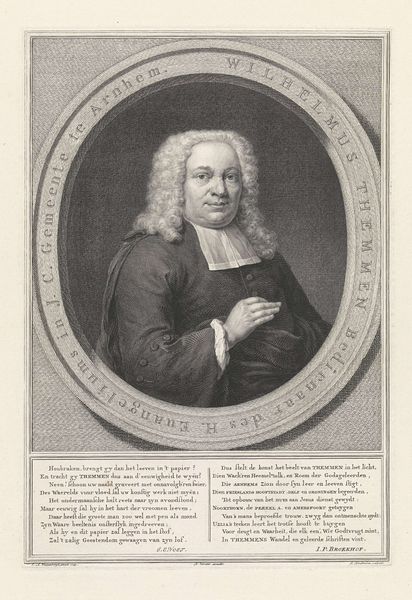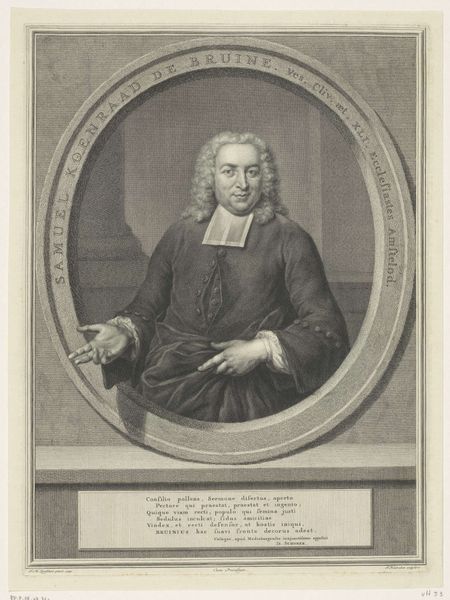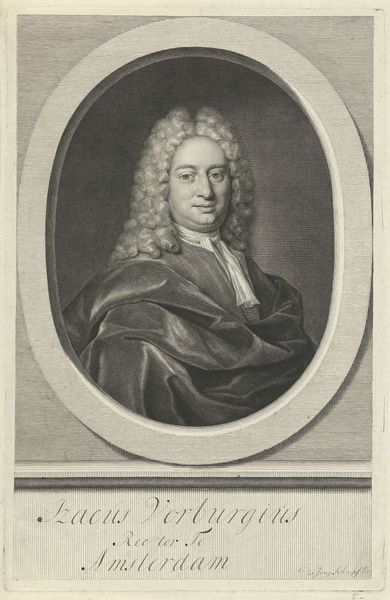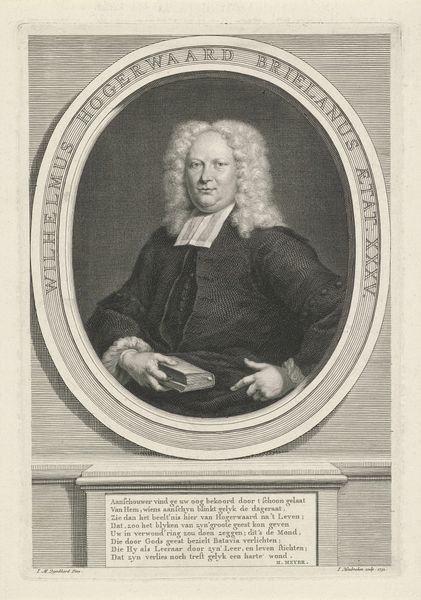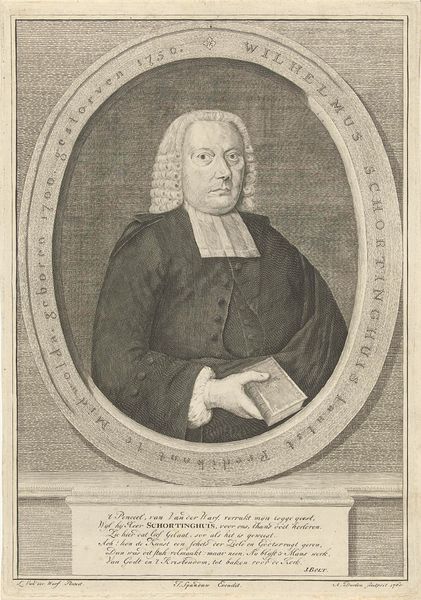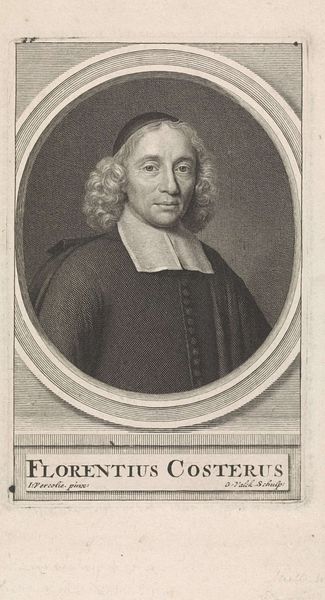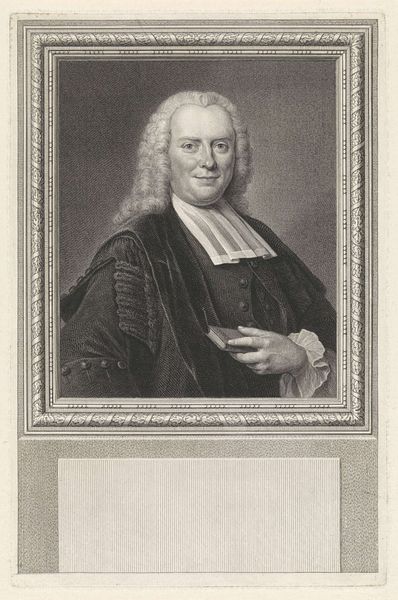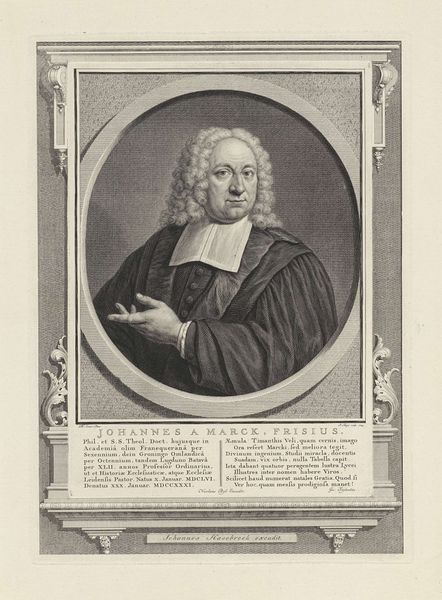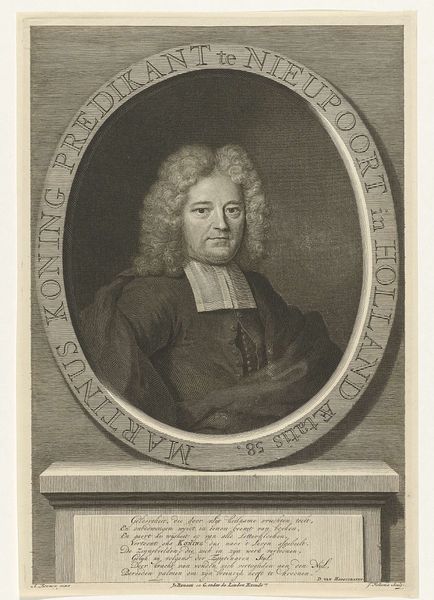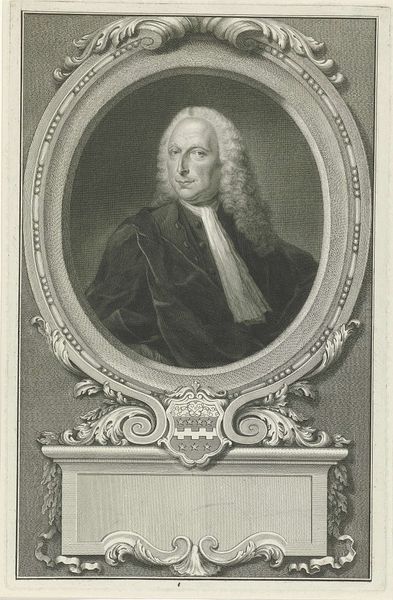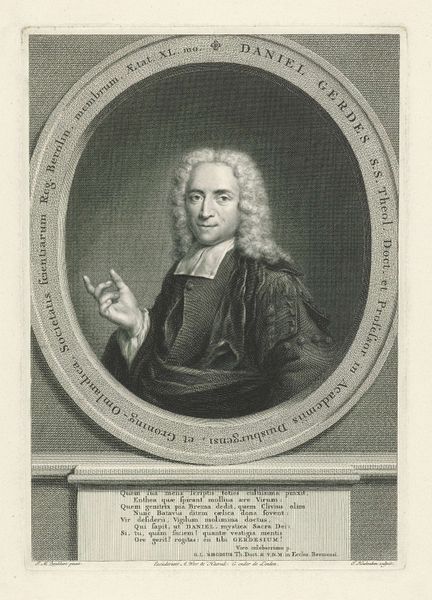
engraving
#
portrait
#
baroque
#
history-painting
#
engraving
Dimensions: height 304 mm, width 216 mm
Copyright: Rijks Museum: Open Domain
Editor: This is Jacob Houbraken’s “Portret van Hendrik Ravesteijn,” an engraving from 1742 currently at the Rijksmuseum. The baroque style creates a solemn feeling. How do you interpret this work? Curator: Given that Houbraken created this engraving in 1742, a period steeped in religious and political tension, let's think about how Ravesteijn's role as a preacher might intersect with those broader societal currents. How does Houbraken visually construct Ravesteijn to project authority and, perhaps, a specific theological stance? Consider the text at the bottom, the subject's hand gesture, and how the oval frame creates distance. How might Ravesteijn be leveraging the cultural authority associated with religious figures during that time? Editor: The subject is indeed carefully staged. The way the light falls on his face makes him appear wise. It is also interesting how the inscription gives additional meaning and praises the achievements and impact of Hendrik Ravesteijn. Curator: Exactly. The inscription acts as a kind of propaganda, doesn’t it? A carefully crafted message meant to solidify Ravesteijn’s legacy and influence within a community grappling with complex religious and philosophical questions. Considering the broader history painting trends and baroque aesthetic of the period, portraits were tools to assert social identities and solidify political statements. Understanding that shifts my view entirely! Editor: I had never thought about portraits being related to propaganda and asserting power like that. I’ll never see portraits the same way again!
Comments
No comments
Be the first to comment and join the conversation on the ultimate creative platform.
